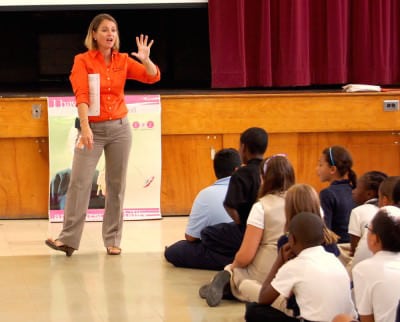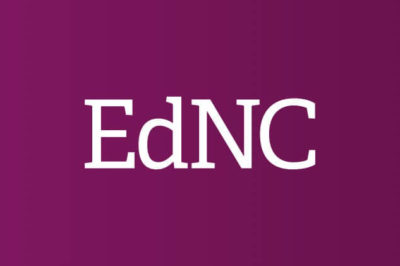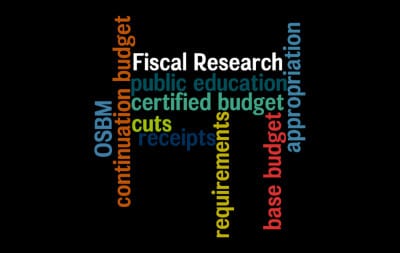
The first assignment of school performance grades for North Carolina’s schools put K-12 public education in the headlines. Conversation and debate should continue regarding exactly what those letter grades represent, i.e., what is measured, not measured, and the appropriateness of the statistics or formula used in determining the grades. These questions are not unusual with the implementation of new evaluation systems, which often warrant ongoing reflection and study to assure validity, as this one does.

However, while some may question the fairness of the measures leading to the current school performance grades, there should be no debate regarding a powerful message revealed through these published grades — POVERTY MATTERS when it comes to student achievement and school performance, and we must continue to improve both.
Of the schools receiving an A or B last week, only 13 and 23.1 percent respectively had 50 percent or more of its children attending the school living in poverty as opposed to 97.9 and 100 percent of those schools receiving a D or F respectively.
Can all students learn at high levels? Absolutely! Do students living in poverty often need additional resources and assistance to overcome barriers beyond their control? Definitely! Do these students deserve highly effective principals and teachers equipped to lead necessary change in order to design and implement learning and support systems for high levels of student success? Yes!
So what should our state’s priority be if we are serious about dramatically improving student achievement for all students in all schools?
John Maxwell, internationally respected leadership expert and author of over 70 books, shares his leadership philosophy quite simply: “Everything rises and falls on leadership.” We know from experience and research that a great school requires a great principal, and every single child in this state must attend a great school! Sixty percent of a school’s influence on student achievement is related to the teacher and second to that is the influence of the principal, which accounts for as much as 25 percent of a school’s success (The Wallace Foundation, 2012). It is impossible to find a high needs school that has turned around without a highly effective turnaround principal at the helm. Therefore, we should all feel a sense of urgency to assure that we have great principals for all schools so that our students will be prepared for the next grade and for life!
The North Carolina State Board of Education understood the urgent need for effective turnaround principals when it approved the creation of regional leadership academies and an alternate licensure process in 2010.
The North Carolina State Board of Education understood the urgent need for effective turnaround principals when it approved the creation of regional leadership academies and an alternate licensure process in 2010. Prior to the regional leadership academies, licensure for the principalship had been largely a self-selection process leading to a master’s degree in school administration.
Understanding the need for strong school leaders, the SBE decided to examine the process for identifying and preparing a leadership pipeline for public education, which led to the creation of three regional leadership academies (RLAs) funded by Race to the Top (RttT) funds—Northeast Leadership Academy, Piedmont Triad Leadership Academy, and Sandhills Leadership Academy. These academies were formed utilizing key elements found in the most successful principal preparation programs across the country—a rigorous selection process; a full-time, year-long internship; a cohort approach; mentoring from a master principal; laser-focused school transformation curriculum emphasizing leadership development, change management, and school improvement; and coaching.
Results thus far have been impressive. Over 90 percent of the regional leadership academy graduates have been hired as school leaders upon completion of the programs, and the unique preparation these graduates experience is contributing to their success on the job. In fact, more than 34 principals and 110 assistant principals are already leading schools today after completing one of the three regional leadership academies. These are phenomenal results after just three years and very much needed, especially in rural, high poverty communities.

Indeed, a leadership pipeline has been cultivated in areas served by the RLAs. Kim Robertson, Principal of Elizabeth Cashwell Elementary School in Cumberland County Schools and the Wells Fargo 2015 Sandhills/South Central Regional Principal of the Year, was a mentor principal for Sandhills Leadership Academy (SLA) in all three cohort years. She is a strong proponent of the regional leadership academies.
“Highly effective school leaders are paramount in the success of our schools. SLA prepares highly effective school leaders to quickly transition into the principal’s role by immersing the candidate into schools that offer challenges in all areas of school leadership and by offering intensive professional development weekly throughout the school year. The interns I have had the honor to host are very bright and highly motivated to see that students succeed no matter the child’s background, and are well prepared to step into the role of school principal at the end of the program.
We need our state legislators, our DPI leadership, and RLA principals to collaborate to more wisely utilize funding in the principal fellows program. We must be more diligent identifying high needs schools and training/placing exceptional principals there to make a difference. The work there is more intensive and leadership fellowships could be used to compensate for service. This can be done and should be done quickly if our state leadership is serious about bringing our school system above the rest.”
– Kim Robertson, Principal, Elizabeth Cashwell Elementary School, Cumberland County Schools
One would think that the success of the RLAs would lead to an expansion of the effort so that all regions across the state would have access to this comprehensive and focused approach to principal preparation. Learning at the elbow of a successful mentor in a full-time internship as well as other key elements leading to the RLA graduates’ success resulted in principal and assistant principal candidates that superintendents wanted to hire.
Unfortunately, the RttT funding for these RLAs has been exhausted, and the academies are going away if new funding and commitment to this work is not acquired soon. With the investment of time and resources, as well as lessons learned first-hand right here in our great state regarding how to most effectively prepare the principals we desperately need now and for the future, it will be a sad day.



